Do you have a question about the Gateway Solo 1200 and is the answer not in the manual?
Identifies and describes the components located on the front of the notebook.
Details the ports and components found on the left side of the notebook.
Identifies components and indicators on the right side of the notebook.
Explains the ports and connectors located on the back of the notebook.
Details the components situated on the bottom surface of the notebook.
Guides on how to find the model and serial number information.
Lists and describes optional accessories that can enhance notebook functionality.
Provides step-by-step instructions for connecting the AC adapter for power.
Advises on safeguarding the computer from power surges and electrical problems.
Explains the procedure for powering on the notebook.
Describes how to resume the notebook from its power-saving Standby mode.
Guides on the proper procedure to shut down the computer.
Explains how to add, delete, or switch between user accounts.
Details the meaning of various status lights and indicators on the notebook.
Describes the layout and functions of the notebook's keyboard.
Introduces the EZ Pad touchpad and its basic operations.
Introduces HelpSpot as a collection of help information and tutorials.
Describes the availability of video tutorials within HelpSpot for learning tasks.
Explains how to access and use the built-in online help for programs.
Outlines the resources available on the Gateway website for support.
Provides an overview of the Windows desktop interface.
Explains the elements of the Windows desktop like taskbar and Start button.
Guides on how to navigate and use the Start menu to launch applications.
Explains how to identify standard window components like title bars and buttons.
Covers organizing, copying, moving, and deleting files and folders.
Covers creating, saving, opening, and printing documents.
Lists common keyboard shortcuts for Windows and applications.
Explains methods for transferring files, settings, and programs from an old PC.
Explains what the Internet is and the basic requirements to access it.
Provides instructions for setting up an Internet Service Provider (ISP) account.
Guides on how to connect to and disconnect from an Internet account.
Explains how to navigate and interact with websites using a web browser.
Details the steps to access websites via URLs or links.
Explains the process of transferring files from the internet to your computer.
Covers the process of sending and receiving email messages.
Describes how to use the 3.5-inch diskette drive for storage and transfer.
Explains how to insert and use CDs for multimedia playback.
Details how to adjust the system and device volume levels using hardware or software.
Guides on using Sound Recorder to make and play audio recordings.
Explains how to play audio and video files using Windows Media Player.
Introduces MusicMatch for playing CDs, creating MP3s, and managing music.
Guides on configuring personal information and logos for fax cover pages.
Details the step-by-step process for sending a fax document.
Explains how to fax documents directly from most applications.
Guides on how to receive, view, and print incoming faxes.
Explains how to check battery status and indicators.
Details how the battery recharges when connected to AC power.
Provides instructions for replacing the notebook's main battery.
Offers tips on conserving battery power and using alternate sources.
Explains Standby and Hibernate modes for power saving.
Guides on customizing power settings via the Control Panel.
Provides tips for using the modem while traveling, including adapters and line testers.
Discusses restrictions and guidelines for using wireless connections internationally.
Advises on copying files and setting up remote access for travel.
Offers advice on securing the notebook against theft and loss.
Recaps power management tips for extending battery life during travel.
Covers changing color depth, resolution, background, and screen savers.
Explains how to adjust touchpad sensitivity, button configuration, and gestures.
Guides on customizing the actions of the keyboard's multi-function buttons.
Explains how to allocate system memory for graphics, affecting performance.
Describes how to insert and remove PC Cards (PCMCIA) for expanded functionality.
Provides essential safety guidelines to prevent ESD damage when handling internal components.
Guides on installing SO-DIMM memory modules to increase RAM.
Details the process of replacing the notebook's hard drive with a new one.
Explains the benefits and capabilities of setting up a computer network.
Introduces Gateway's solution for home networking of devices.
Discusses choosing between wired and wireless network connection types.
Helps compare program requirements with network speeds.
Provides lists of equipment needed for HPNA and Ethernet networks.
Offers general advice on maintaining the notebook's physical condition and longevity.
Guides on creating a bootable diskette for system recovery.
Explains how to use antivirus software to scan and remove viruses.
Covers checking disk space, using Disk Cleanup, and defragmentation.
Explains the process of recalibrating the battery for accurate charge readings.
Provides instructions on cleaning the computer's exterior, keyboard, screen, and mouse.
Explains when and how to reinstall device drivers for hardware to function correctly.
Guides on using the System Restoration Kit to update device drivers.
Details the process of reinstalling the Windows operating system using the restoration kit.
Explains how to reinstall applications from the restoration kit or CDs.
Provides safety precautions to follow while troubleshooting the computer.
Lists initial checks and actions to take when encountering computer issues.
Introduces diagnostic tools like PC Doctor for system analysis.
Addresses common issues with CD drive recognition and audio playback.
Discusses resolving IRQ conflicts and problems with new device installations.
Covers problems like unrecognized diskette drives and error messages.
Addresses issues related to file deletion and recovery from the Recycle Bin.
Covers hard drive errors, insufficient space, and access problems.
Addresses issues with connecting to the Internet and browsing websites.
Covers external keyboard not working or character repeat issues.
Discusses screen resolution and brightness issues.
Addresses "Memory error" and "Not enough memory" messages.
Covers modem connection, dial-up, and noise issues.
Discusses external mouse not working or erratic movement.
Addresses problems connecting to company networks.
Covers issues with incorrect passwords and forgotten startup passwords.
Addresses problems after installing PC Cards and resource conflicts.
Covers computer not working on AC or battery power, and not turning off.
Addresses printer not turning on, not printing, or queue issues.
Covers issues with no sound from speakers.
Addresses dim displays or external monitor issues.
Provides crucial safety instructions for setting up and using the system.
Offers advice on safe handling and maintenance practices during system operation.
Recommends using only Gateway-approved replacement parts and accessories.
Details compliance information for wireless devices in various regions.
Lists FCC compliance information for intentional and unintentional emitters.
Details Industry Canada (IC) compliance for wireless and modem devices.
Mentions Mexico's RF device regulations.
Lists EU directives and approvals for IT equipment and radio devices.
Mentions Japan's RF device regulations and operational guidelines.
Provides the VCCI statement for Japanese market compliance.
Details compliance for wireless devices and modem telecommunications in ANZ.
Addresses safety standards for CD drive laser devices.
Provides the FCC declaration of conformity for the Solo 1200 product.
Outlines FCC Part 68 requirements for modem connections.
Identifies and describes the components located on the front of the notebook.
Details the ports and components found on the left side of the notebook.
Identifies components and indicators on the right side of the notebook.
Explains the ports and connectors located on the back of the notebook.
Details the components situated on the bottom surface of the notebook.
Guides on how to find the model and serial number information.
Lists and describes optional accessories that can enhance notebook functionality.
Provides step-by-step instructions for connecting the AC adapter for power.
Advises on safeguarding the computer from power surges and electrical problems.
Explains the procedure for powering on the notebook.
Describes how to resume the notebook from its power-saving Standby mode.
Guides on the proper procedure to shut down the computer.
Explains how to add, delete, or switch between user accounts.
Details the meaning of various status lights and indicators on the notebook.
Describes the layout and functions of the notebook's keyboard.
Introduces the EZ Pad touchpad and its basic operations.
Introduces HelpSpot as a collection of help information and tutorials.
Describes the availability of video tutorials within HelpSpot for learning tasks.
Explains how to access and use the built-in online help for programs.
Outlines the resources available on the Gateway website for support.
Provides an overview of the Windows desktop interface.
Explains the elements of the Windows desktop like taskbar and Start button.
Guides on how to navigate and use the Start menu to launch applications.
Explains how to identify standard window components like title bars and buttons.
Covers organizing, copying, moving, and deleting files and folders.
Covers creating, saving, opening, and printing documents.
Lists common keyboard shortcuts for Windows and applications.
Explains methods for transferring files, settings, and programs from an old PC.
Explains what the Internet is and the basic requirements to access it.
Provides instructions for setting up an Internet Service Provider (ISP) account.
Guides on how to connect to and disconnect from an Internet account.
Explains how to navigate and interact with websites using a web browser.
Details the steps to access websites via URLs or links.
Explains the process of transferring files from the internet to your computer.
Covers the process of sending and receiving email messages.
Describes how to use the 3.5-inch diskette drive for storage and transfer.
Explains how to insert and use CDs for multimedia playback.
Details how to adjust the system and device volume levels using hardware or software.
Guides on using Sound Recorder to make and play audio recordings.
Explains how to play audio and video files using Windows Media Player.
Introduces MusicMatch for playing CDs, creating MP3s, and managing music.
Guides on configuring personal information and logos for fax cover pages.
Details the step-by-step process for sending a fax document.
Explains how to fax documents directly from most applications.
Guides on how to receive, view, and print incoming faxes.
Explains how to check battery status and indicators.
Details how the battery recharges when connected to AC power.
Provides instructions for replacing the notebook's main battery.
Offers tips on conserving battery power and using alternate sources.
Explains Standby and Hibernate modes for power saving.
Guides on customizing power settings via the Control Panel.
Provides tips for using the modem while traveling, including adapters and line testers.
Discusses restrictions and guidelines for using wireless connections internationally.
Advises on copying files and setting up remote access for travel.
Offers advice on securing the notebook against theft and loss.
Recaps power management tips for extending battery life during travel.
Covers changing color depth, resolution, background, and screen savers.
Explains how to adjust touchpad sensitivity, button configuration, and gestures.
Guides on customizing the actions of the keyboard's multi-function buttons.
Explains how to allocate system memory for graphics, affecting performance.
Describes how to insert and remove PC Cards (PCMCIA) for expanded functionality.
Provides essential safety guidelines to prevent ESD damage when handling internal components.
Guides on installing SO-DIMM memory modules to increase RAM.
Details the process of replacing the notebook's hard drive with a new one.
Explains the benefits and capabilities of setting up a computer network.
Introduces Gateway's solution for home networking of devices.
Discusses choosing between wired and wireless network connection types.
Helps compare program requirements with network speeds.
Provides lists of equipment needed for HPNA and Ethernet networks.
Offers general advice on maintaining the notebook's physical condition and longevity.
Guides on creating a bootable diskette for system recovery.
Explains how to use antivirus software to scan and remove viruses.
Covers checking disk space, using Disk Cleanup, and defragmentation.
Explains the process of recalibrating the battery for accurate charge readings.
Provides instructions on cleaning the computer's exterior, keyboard, screen, and mouse.
Explains when and how to reinstall device drivers for hardware to function correctly.
Guides on using the System Restoration Kit to update device drivers.
Details the process of reinstalling the Windows operating system using the restoration kit.
Explains how to reinstall applications from the restoration kit or CDs.
Provides safety precautions to follow while troubleshooting the computer.
Lists initial checks and actions to take when encountering computer issues.
Introduces diagnostic tools like PC Doctor for system analysis.
Addresses common issues with CD drive recognition and audio playback.
Discusses resolving IRQ conflicts and problems with new device installations.
Covers problems like unrecognized diskette drives and error messages.
Addresses issues related to file deletion and recovery from the Recycle Bin.
Covers hard drive errors, insufficient space, and access problems.
Addresses issues with connecting to the Internet and browsing websites.
Covers external keyboard not working or character repeat issues.
Discusses screen resolution and brightness issues.
Addresses "Memory error" and "Not enough memory" messages.
Covers modem connection, dial-up, and noise issues.
Discusses external mouse not working or erratic movement.
Addresses problems connecting to company networks.
Covers issues with incorrect passwords and forgotten startup passwords.
Addresses problems after installing PC Cards and resource conflicts.
Covers computer not working on AC or battery power, and not turning off.
Addresses printer not turning on, not printing, or queue issues.
Covers issues with no sound from speakers.
Addresses dim displays or external monitor issues.
Provides crucial safety instructions for setting up and using the system.
Offers advice on safe handling and maintenance practices during system operation.
Recommends using only Gateway-approved replacement parts and accessories.
Details compliance information for wireless devices in various regions.
Lists FCC compliance information for intentional and unintentional emitters.
Details Industry Canada (IC) compliance for wireless and modem devices.
Mentions Mexico's RF device regulations.
Lists EU directives and approvals for IT equipment and radio devices.
Mentions Japan's RF device regulations and operational guidelines.
Provides the VCCI statement for Japanese market compliance.
Details compliance for wireless devices and modem telecommunications in ANZ.
Addresses safety standards for CD drive laser devices.
Provides the FCC declaration of conformity for the Solo 1200 product.
Outlines FCC Part 68 requirements for modem connections.

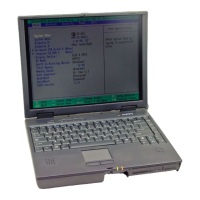
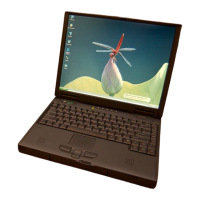
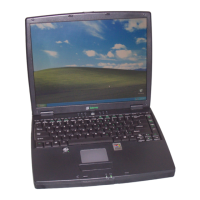

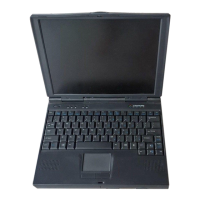



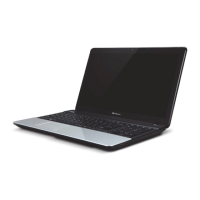
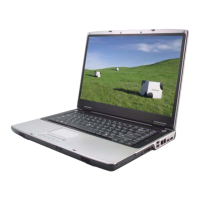

